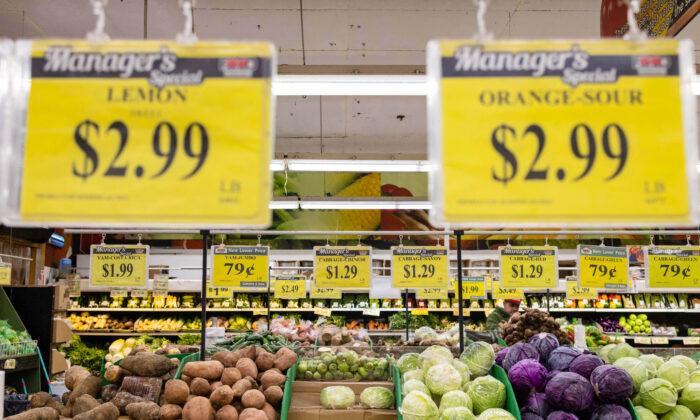While the reduction in headline CPI to 3 percent from 9.1 percent in June 2022 was certainly welcome, discussion about the “end of inflation” is, at a minimum, premature and quite possibly misses the point altogether.
It’s time for an inflation reality check. Core inflation (which excludes volatile energy and food prices) remains stubbornly high at nearly 5 percent, and overall price levels are up by nearly 20 percent since June 2020. Until both core inflation comes down and wages catch up with what appears to be a permanently higher overall-price-level plateau, inflation will remain a nontransitory problem.
Overall-price-level growth, as measured by headline CPI, has slowed for the past 12 months. This has been largely driven by energy prices, which have fallen sharply since summer 2022. However, with the exception of energy, prices for many goods and most services are still rising too fast. The dramatic decline in energy costs (gasoline prices were down by more than 26 percent from June 2022, for example) masks the continued rise in other important categories. By way of example, in June, transportation prices rose by 8.2 percent and shelter by 7.8 percent, while food and electricity prices rose by 5.7 percent and 5.4 percent, respectively. Other categories are faring worse, with motor vehicle insurance prices rising by a stunning 16.9 percent since June 2022.
When energy and food are excluded, core CPI still remains high at 4.8 percent growth in June, following a 5.3 percent increase in May. June was the first month since November 2021 in which core CPI dipped below 5 percent, but the Federal Reserve knows that it still has a long way to go before it can declare victory.
The unpleasant reality that all Americans should remember is that the overall price level has increased by nearly 20 percent since 2020, and by much more in the categories most relevant to most households. Even with the recent large decline in energy prices, fuel oil and gasoline prices remain, respectively, 82 percent and 71 percent higher than they were in June 2020. Utility gas and electricity have risen by 30 percent and 24 percent, respectively. Used car prices remain 47 percent higher, and overall food costs are up by nearly 20 percent. Shelter has trailed headline inflation at just under 17 percent, but the category nonetheless represents a large portion of household spending and thus marks a substantial increase in the cost of living. Basically, everything that consumers need: food, shelter, transportation, and energy, remains prohibitively expensive.
There’s some good news. Wage growth is accelerating as workers demand more from employers. Nominal wage growth for June 2023 was 5.6 percent, above both headline and core CPI. However, wages still have a way to go to catch up with three years of inflation. Since June 2020, nominal wages have grown by 16.3 percent during a period in which headline CPI grew by 18.4 percent. Those who changed jobs managed to increase nominal wages by 18.7 percent, while those who remained loyal and stayed with the same employer for three years have lagged, at 15.3 percent nominal wage growth.
The United States seems to be both exporting inflation to Europe—which is more directly affected by the Ukraine conflict—and absorbing goods deflation from China; both appear to be helping to moderate overall price levels in the United States.
In summary, before the Biden administration can declare an end to inflation, core CPI must come down, wages need to catch up with overall price levels without overshooting and thus driving another round of price increases, and the United States needs to avoid a return to energy-driven inflation. In July, crude oil prices have risen from June’s lows, but they remain below the threshold $80 per barrel and well below summer 2022’s high of $100 per barrel. As such, this poses no particular inflationary threat unless there’s an external event that shocks the market. The biggest risk factor to energy prices continues to be the war in Ukraine and the question of whether China will manage to stimulate economic growth, which has been remarkably disappointing so far this year. In the meantime, odds are still on for a 25 basis-point (0.25 percent) interest-rate increase by the Fed’s policy-making arm, the Federal Open Market Committee, when it meets later this month.






